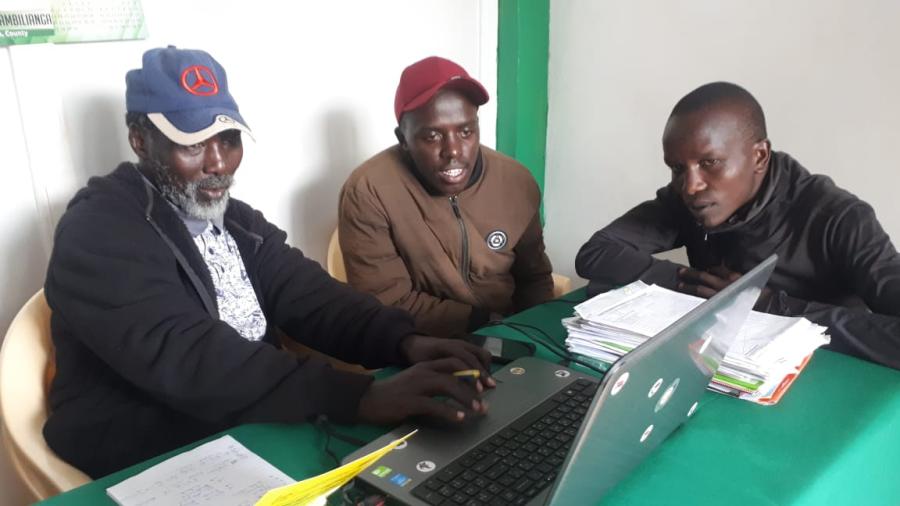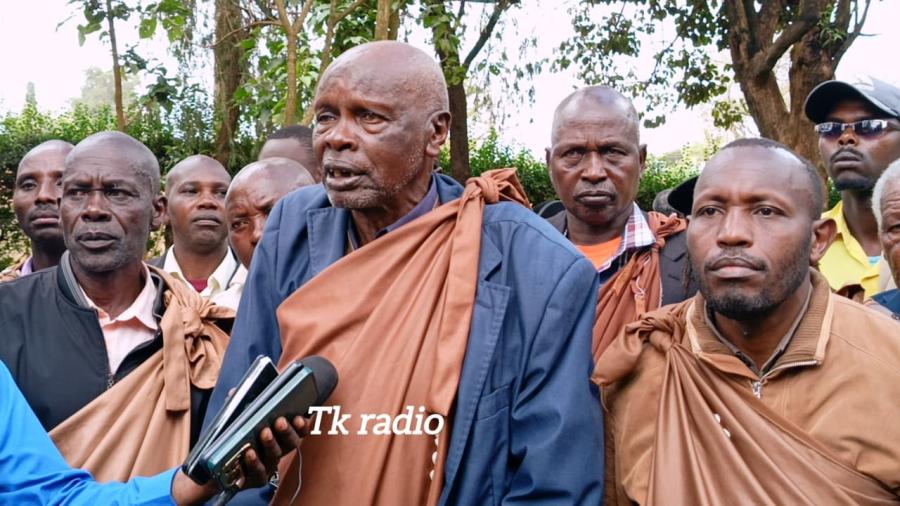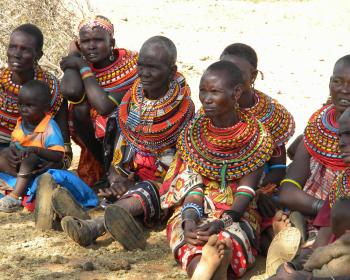No issue is more critical to the future well-being of Kenya's pastoral populations than secure land tenure. Herders' access, particularly during dry months, to grazing land and water resources is the essence of any pastoral existence. Pastoralists' concern with security of land tenure overrides other development considerations - provision of technical assistance in the areas of animal health, marketing, cooperatives, and water development. Only when the land tenure issue is boldly addressed will sustained development take place in Kenya's rangelands. This essay briefly describes and analyzes the history of the pastoral lands crisis in Kenya, the social and ecological effects of insecure tenure, and contemporary efforts toward redressing the pastoral land issue in Kenya.
The Era of Pacification and Benign Neglect
Early colonial administrations sought to pacify Kenya's pastoral regions. British concern with establishing military control in these areas resulted in several territorial changes. For example, the colonial campaign halting the southward expansion of the Turkana into areas north of Lake Baringo allowed the Pokot to migrate across north Baringo. Somali pastoral expansion in northeast Kenya was similarly curtailed, enabling certain groups to take advantage of territories that had not historically been theirs. The territorial claims of the south Borana to Isiolo, for example, can be traced to the colonial era when such groups as the Laikipiak Maasai were relocated and other groups (e.g., the Somali) discriminated against. As Hjort indicates, prior to the colonial period the Isiolo area was inhabited predominantly by Laikipiak Maasai, Samburu, and Somali, rather than by Borana.
Other pastoral or agropastoral groups whose territorial integrity was threatened by Pax Brittanica were the Nandi, the Kamba, the Uasin Gishu Maasai, the Kipsigis, and the Samburu. The Nandi were subjected to full-scale military expeditions to secure land for the Uganda railroad.
Further pressure on pastoral lands resulted from European settlers' demands for the Colony's best agricultural and range lands. Pastoral groups inhabiting the higher-elevated, better-watered areas, such as the Nandi and the Laikipiak Maasai, were especially vulnerable. The best documented examples of large-scale takeover of pastoral lands by European farmers involve the Laikipiak and Uasin Gishu Maasai. Both of these groups inhabited prime agricultural and livestock-producing areas. In the early twentieth century, the Laikipiak and sections of the Uasin Gishu Maasai were relocated to southern Maasai territories, especially to Narok District. Their former lands were then redistributed by the Colony to European farmers for commercial agricultural purposes. More than 5,000 square kilometers were usurped from the Laikipiak Maasai alone. Some Uasin Gishu Maasai were relocated more than once: in the early twentieth century to the Eldama Ravine area of south Baringo District, and in the 1930s to Narok District. The entire territories of Ravine and Uasin Gishu Districts were restricted to European settlement.
Following the pacification effort and the transfer of certain rich pastoral lands to Europeans, the colonial stance toward pastoral groups was one of "benign neglect". Pastoral areas were generally isolated and far removed from European settlement. The more arid rangelands were of little value to either the Colony or European settlers. Moreover, most of the labor supplied to European farms came from African farming areas, rather than from the pastoral regions, making the latter less important to the Colony's agrarian economy. Most of the pastoral lands were held in trust by the groups themselves, and the government rarely intervened other than during times of famine and drought, or when conflicts arose between the pastoral groups and the European settlers. Such conflicts often occurred when pastoralists moved their cattle to European-controlled grazing areas, or when stock diseases in the pastoral areas threatened settlers' livestock enterprises.
Land Use Competition in the Post-Independence Period
While some of the better-watered dry-land grazing areas were lost to Europeans in the colonial period, the loss of pastoral lands accelerated in the post-independence era. The colonial policy of native "reserves" inhibited African farming groups from encroaching on pastoral lands [important exceptions are the Loitokitok and Ngong areas of Kajaido District]. With independence and the ensuing political dominance of agriculturalists such as the Kikuyu, agricultural groups were permitted greater freedom of movement. In many cases, this meant that farmers settled in the higher rainfall pastoral areas. These lands were often located where pastoral and agricultural populations interface, and in most cases were regions vital to the pastoral land use system. Today almost 30% of the population of Kajaido District - the most important Maasai district in Kenya - is presently Kikuyu - an indication of the extent to which agricultural encroachment is taking place. Further evidence of this trend comes from the Population Census of 1969, which shows that the most attractive districts for rural migrants are pastoral, including Baringo, Narok, Kajaido, Tana River, and Samburu.
Further loss of pastoral lands is attributed to the expansion of the tourist industry and national parks. Most of Kenya's tourist sector, the second largest earner of foreign exchange for the nation's economy, focuses on the country's wildlife resources, which are concentrated in the country's pastoral areas. Indeed, two of the most important wild game areas in Kenya (Amboseli and Maasai Mara) are in Maasai regions. Both of these, particularly the swamp grazing zone of Amboseli, were significant grazing areas for Maasai. Recent legislation in Kenya transformed these two wildlife areas from game reserves (which allow some pastoral use of the area) into national parks that exclude pastoralists from using the land. The Maasai are further disadvantaged by Kenya's wildlife legislation that bars hunting of such animals as the wildebeest, a species that often transmits deadly stock diseases to Maasai cattle.
Pastoral Constriction and its Social and Ecological Implications
Droughts are regular occurrences in Kenya's arid and semi-arid lands. It is during these years that herders most severely feel the loss of important reserve/dry season grazing areas. Without access to traditional highland and swamp grazing areas, pastoral groups like the Maasai must concentrate their animals on already depleted lowland range areas. Under these conditions, livestock losses are numerous. In areas such as central Baringo District, as much as 50% of all cattle died during the 1979-1980 drought. Government and charitable organizations now provide famine relief in most pastoral regions during drought years, but this only relieves the symptoms, not the cause.
The general impoverishment of certain of Kenya's pastoral areas, resulting primarily from a loss of rangeland, has led to increased dependence on government relief, government-sponsored irrigation schemes and settlements, and the incorporation of wage employment in pastoral families to supplement decreased production and declining incomes. Yet migration by male family members to earn wages in urban areas decreases the labor available for proper management of the declining resources. This in turn adds to the general demise of the pastoral enterprise. Many pastoral families are truly faced with a "Catch 22" situation.
Conclusion
Pastoralists are unlikely to ever recover the lands that were taken from them. What is important at present is the design of a clear land/use policy for Kenya's pastoral areas and recognition of existing pastoral land rights. While the Government recognizes the territorial rights of the pastoralists in principle, and does not have a policy of state sovereignty over unoccupied lands, particular circumstances arise (e.g., the need for a tourist park, a road, or an irrigation scheme) that overrule pastoralists' land rights. In-migration by farmer groups is such a case. What started off as an insignificant influx of population has, over a 20-year period, turned into a major encroachment upon pastoral lands.
In the 1970s, the government of Kenya formed an interministerial land use policy committee to mediate land use conflicts among competing herders, farmers, tourist promoters, and other groups. To date, the organization has not convened, perhaps because of the political difficulties involved with land allocation disputes in Kenya. The pastoral land issue, which has its origins in the colonial era, remains unresolved for most of the pastoral groups in the East African country. Nor is Kenya's policy toward pastoralists different from other East African countries.
For the herders, therefore, development investments that provide some legal recognition of their land rights, such as the group ranch schemes, are enthusiastically endorsed, not for their economic development potential but because they protect territorial rights.
Article copyright Cultural Survival, Inc.



